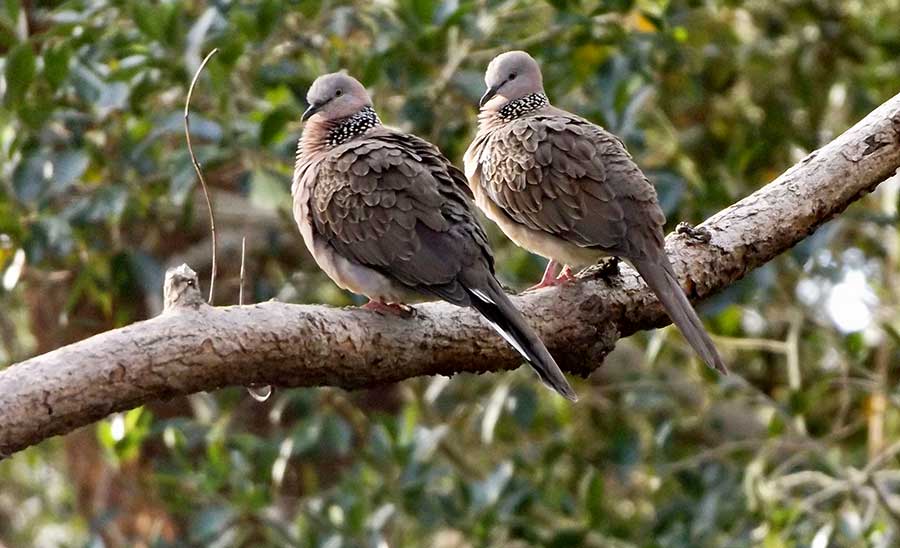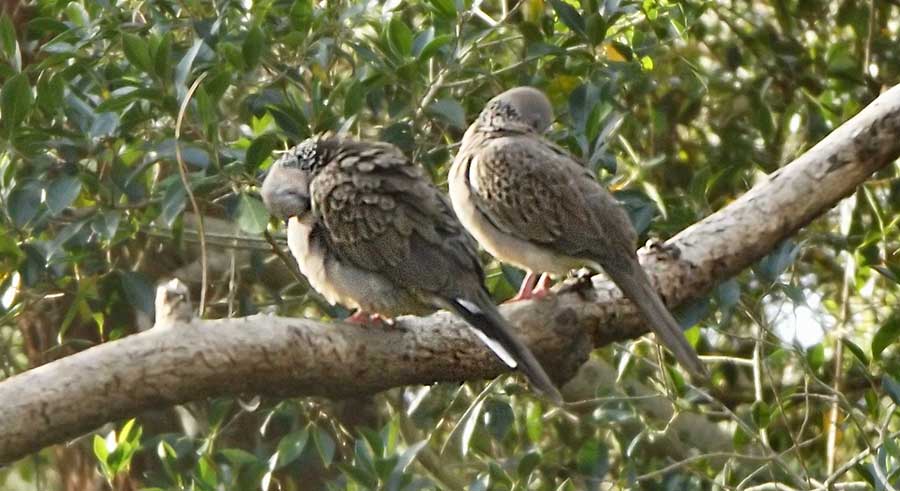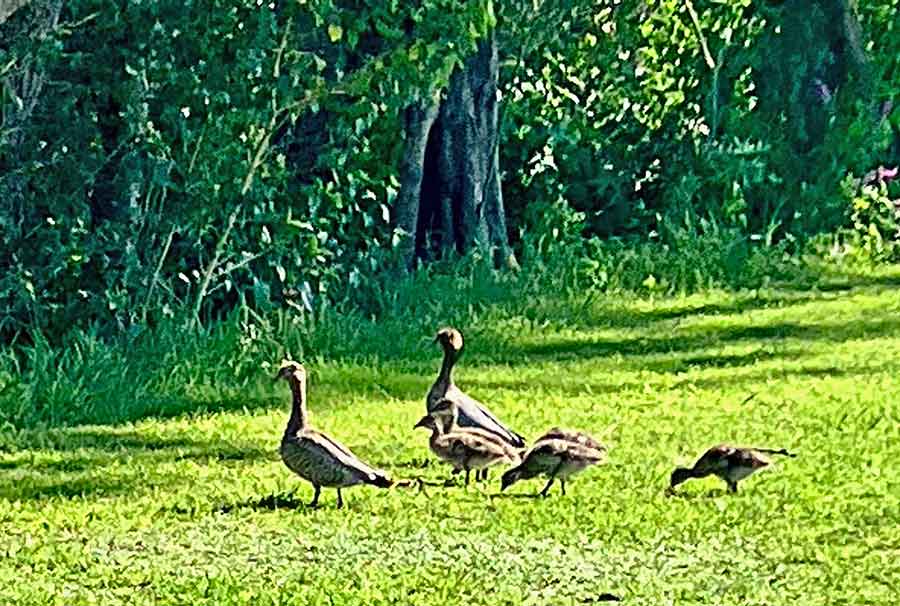
Not all birds like this wet weather.
Noticing two fat birds hurrying across the sodden grass in a manner that struck me as different, I went outside to see where they went. No luck, so I returned to my desk.
And they were right in front of my window’s view.
Books out; what were these very handsome birds?
Clearly they were not always so fluffy, but those distinctive collars decided me: Spotted Turtledoves. Found in coastal and urban areas, they were introduced to Melbourne in the 1860s, but are natives of India and South-east Asia.

The business of cleaning and drying soon made them less easy to identify, and my brief sighting was a boon, as they flew off soon after.

Next day, waiting in an industrial area for my vehicle rego check, I was treated to the sight of a family of Maned Wood Ducks, parents and five chicks, who came waddling swiftly across the grass at a distance from me.
No camera, but I did have my phone. It does not render zoomed shots very well, unfortunately.

They disappeared into a hidden and rather dirty flooded creek nearby and I had trouble spotting them at first.

Wavering amongst the tree reflections, the family was safely swimming away, much happier with the wet weather and the abundance of water than my Turtledove visitors.
You never know where or when Nature will reward your observance, so keep your eyes open!
January, 1857. A spotted-necked turtle dove specimen was donated to the Australian Museum by Master Denison, from India. As the donor may be related to a sponsor of a state of Queensland, and as the Cos via India were highly active, and also related to Denison; best stick to nature notes, like the great seal of the colonies. I take this to be the seal that made it’s way so far inland it elegantly explained the nature of the bunyip. It’s possible they used the co-ordinate system of ‘Australia Station’.